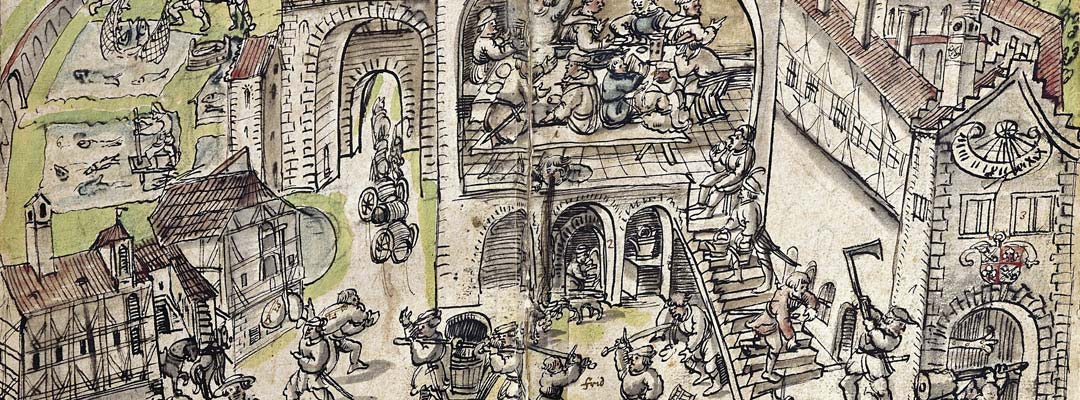The Suppression of Roche Abbey
How a vivid eyewitness account reveals the shocking speed and scale of destruction of Roche Abbey after the Suppression of the Monasteries – and the fragility of human goodness.

CAST OUT
On 23 June 1538, Abbot Henry Cundall of Roche Abbey in South Yorkshire and his 17 monks gathered in their chapter house to surrender their abbey to the king’s commissioners. Roche was one of the many larger religious houses which ‘voluntarily’ surrendered that year, in the course of Henry VIII’s Suppression of the Monasteries.
The monks, cast out of their comfortable abbey with small pensions, had to make the most of what they had.
Each monk had been given the cell in which he slept, ‘wherein there was nothing of value save his bed and apparel’. One monk tried to sell his cell door for two pennies, ‘which was worth more than five shillings’. But the potential buyer refused, ‘for he was a young man, unmarried, and in need of neither a house nor a door’.
UNIQUE ACCOUNT
That young man told his story, 30 years later, to his nephew, Michael Sherbrook. A child at the time of the Suppression, Sherbrook, by then rector of nearby Wickersley, was curious to understand what had happened at Roche after its surrender. His vivid account is the most complete from any religious institution in England.
It was not just the monks’ meagre possessions that were up for grabs. As at other monasteries, after the monks were dismissed, Henry VIII’s agents arrived to make the abbey buildings unusable, planning an orderly dismantling and auction. But while the demolition was in progress, a mob descended on Roche and a free-for-all pillage began.
It would have pitied any heart to see what tearing up of the lead there was, and plucking up of boards, and throwing down of the rafters … and all things of price, either spoiled, plucked away or defaced to the uttermost.
Eventually only the magnificent fragments of the church crossing remained upstanding.
APPETITE FOR DESTRUCTION
Sherbrook wondered whether such an orgy of devastation was a product of hostility towards the Roche monks. It was strange, he thought, that ‘even such persons were content to spoil them, that seemed not two days before to allow their religion, and do great worship and reverence at their Mattins, Masses and other service, and all other their doings’. So he pressed his father, who had also been present, to explain:
For the better proof of this my saying, I demanded of my father, which had bought part of the timber of the church, and all the timber in the steeple, with the bell frame, with other his partners therein … whether he thought well of the religious persons and of the religion then used?
And he told me Yea: For said he, ‘I did see no cause to the contrary.’
‘Well,’ said I, ‘then how came it to pass you was so ready to destroy and spoil the thing you thought well of?’
‘What should I have done?’ said he. ‘Might I not as well as others have some profit of the spoil of the abbey? For I did see all would away; and therefore I did as others did.’
Drawn from the English Heritage Red Guide to Roche Abbey, by Peter Fergusson and Stuart Harrison
